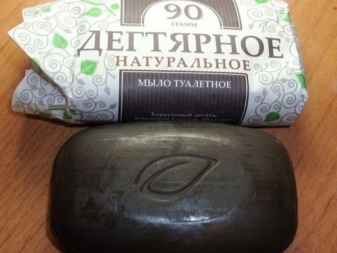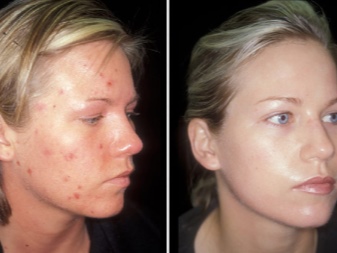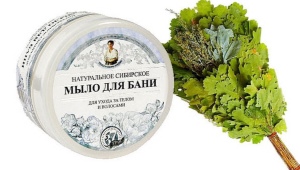Tar soap for acne
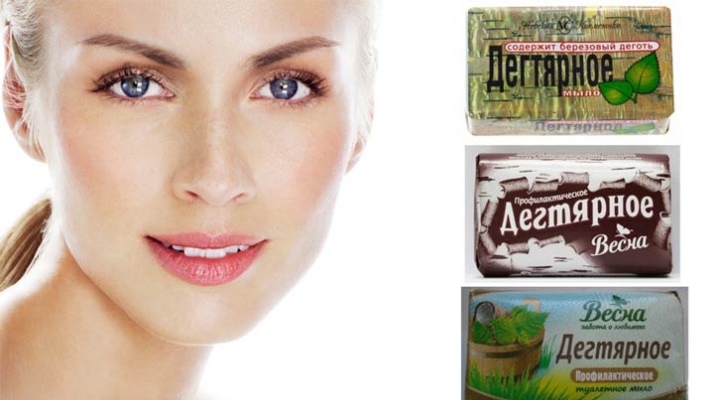
The abundance of cosmetic products today does not detract from the merits of natural compounds that our grandmothers once used. Since ancient times, plant components have helped with various diseases and problems with the skin of the face, including the formation of acne. Tar soap is a unique cosmetic product that has several additional purposes and perfectly copes with skin rashes.
The tar composition has a specific smell, and this is perhaps its main drawback. This cosmetic product allows you to fight acne on the face and body, because it has a pronounced drying effect and is effective with regular use.
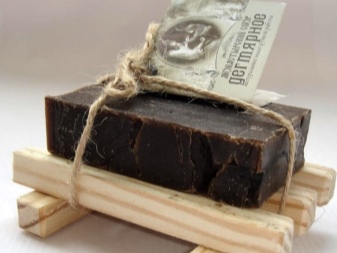

Benefit and harm
A few decades ago, tar soap was a coarse, unsightly piece of soapy substance with a repulsive odor. Modern manufacturers suggest using an improved formula of a "folk" product in order to get rid of inflammation. Useful properties of tar soap are as follows:
- It dries out the skin and resulting inflammation;
- Fights oily shine and the formation of excess sebum - sebum;
- Tar soap is a natural antiseptic, which fights harmful microbes on the surface of the epidermis and prevents the formation of new pimples;
- The components of the product fight the consequences of inflammation - post-acne, age spots, brighten damaged areas and even out the overall tone of the face;
- The product can be used for oily skin types., because it has the ability to regulate the production of sebum, remove oily sheen and fight deep pollution;
- Tar acne soap - the most common remedy in the fight against inflammation. The composition perfectly cleanses the skin, dries pimples and eliminates them from the surface of the face without consequences (scars);
- It helps in the fight against acne and more serious skin diseases like fungi, lichen on the face and body., used to treat boils and purulent formations;
- Gets rid of subcutaneous acne and traces of them due to increased blood circulation, promotes rapid resorption of inflammation inside;
- Tar is used to heal wounds, burns and insect bites, they lubricate the skin with frostbite and loss of sensitivity due to the ability of the component to increase blood circulation.
The range of actions of tar soap is wide: it has an antibacterial, antifungal effect, has a noticeable drying effect, enhances cell renewal by increasing blood circulation.
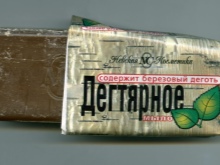
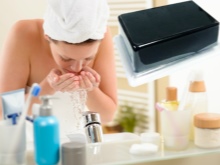

Tar soap has a number of disadvantages that limit its use:
- Bad smell - the first thing that repels girls and women from using this type of soap. Tar has a specific “aroma”, which has the ability to linger on the skin, however, it can also be removed with the help of fragrances included in the composition or another aromatic composition can be used on top;
- Tar soap greatly dries the skin. This was probably noticed by women who use the product regularly. If this kind of cleansing is useful for oily skin, then it is undesirable for dry and sensitive skin. In addition, the use of such an aggressive composition is not recommended daily, it is enough to limit yourself to washing the composition up to 4-5 times a week, depending on the degree of oily skin and the number of problems with it;
- Among the components of tar soap you can find xylene, benzene, toluene, cresol, phenol and other substances - potential allergens, therefore, the tar remedy is not indicated for girls with a sensitive skin type;
- The tar in the composition of the soap forms a film on the surface of the skin, which acts as a protective barrier against external influences, including preventing normal air exchange and can provoke skin disorders at the cellular level. To avoid such a misunderstanding, it is recommended to use a facial tonic that will restore the natural pH balance of the epidermis and remove the very “barrier”;
- There is a so-called intolerance to the components of tar soap. If the amount of inflammation after use has increased, then there is an incompatibility of the composition with the skin. However, dermatologists note that such a reaction is not uncommon, so our skin reacts to the new composition of the product and adapts to it, so conclusions should not be drawn earlier than after a week of using the product.
A tar acne remedy allows you to eliminate imperfections and restore a uniform texture to the epidermis, however, even a natural composition has contraindications.
Since acne predominantly forms on oily skin, tar composition is better for this type of skin, unlike dry epidermis.
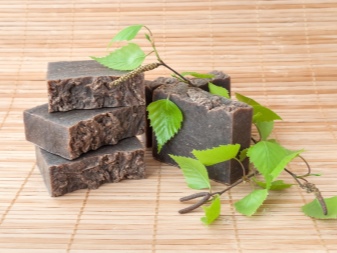

Tar soap has found its application for the face and body. If its use on the face is limited due to individual intolerance (especially smell), dry skin or too thin epidermis, then its use on the back and other parts of the body is practically unlimited. To make the surface of the skin of the shoulders, chest and back smooth, healthy and clean, dermatologists recommend applying tar soap, pre-whipped into foam and leaving it for up to 10 minutes. The components of the soap will dry the inflammation better and at the same time clean the pores.

For more on the benefits of tar face soap, see the following video.
Compound
The classic composition of tar soap: 90% toilet soap without fragrances and additives, 10% birch tar - a specific plant component, which has a number of useful and unique properties.
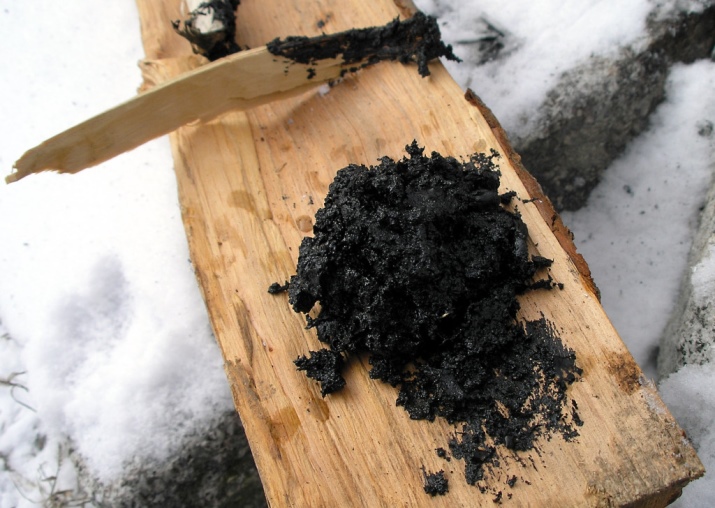
Modern compositions of tar soap differ from each other, but their composition often has several identical components:
- Sodium salts of fatty acids, which are indicated on the packaging as Sodium (Cocoate, Tallowate, Palmate). The component is a plant exturact, harmless to the epidermis;
- Water;
- Birch tar is a key component of tar soap.
The composition of the cleansing product may contain several more components:
- Amino alcohol (Triethanolamine). Softens the aggressive effect of tar and sodium salts on the skin without disturbing the natural pH balance of the epidermis;
- Thickener (Diethylene Glycol);
- Acids (benzoic, citric);
- The binding component of Cellulose Gum, which has a stabilizing effect and creates the same film (protective barrier) on the surface of the skin.
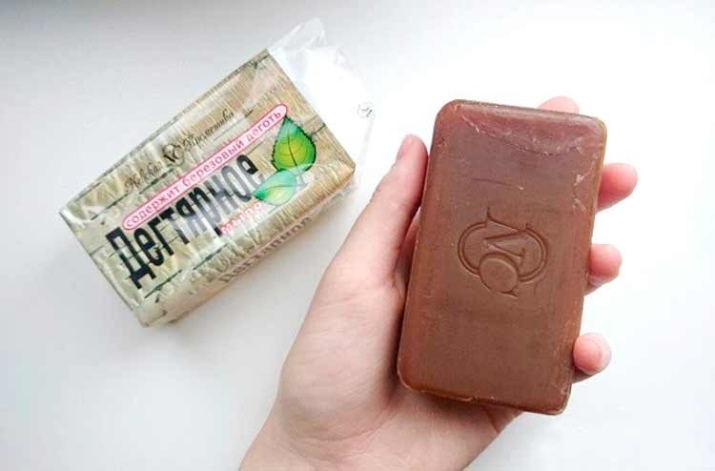
The composition of natural tar soap should be limited to the first set of components that are not numerous and are really necessary to cleanse the skin and fight acne. The rest of the ingredients are superfluous, they should be avoided if possible. In addition, they can have an unpleasant effect on the epidermis, causing dry skin and the formation of an allergic reaction.
Modern manufacturers often add various kinds of fragrances to the composition of tar soap, which make it possible to smooth out the natural smell of tar. Whether to use such soap for the face is a personal choice for everyone. If the "aroma" of tar is so unpleasant, then get a soap with the aroma of chamomile, for example.

Contraindications
It is not always useful to use a tar composition for acne. Anyone who has encountered the problem of acne and decided to eradicate it with the help of this natural cosmetic product should know about the existing contraindications.
- Dry, thin, sensitive skin - these are the types of epidermis on which the use of an aggressive composition of tar soap is not recommended. Tar has a noticeable drying effect and is suitable for use exclusively on normal, combination and oily skin types;
- With rosacea the use of such a composition is also not recommended, since soap can further thin the surface of the skin and strengthen the red mesh;
- Tar soap is contraindicated in women with respiratory diseases, such as asthma. It is known that tar has a sharp specific smell that can provoke an attack;
- Any neuropathy is another contraindication. You can not wash with tar soap for women suffering from epilepsy;
- Cosmetologists do not recommend using the product for severe acnewhen there is “no living place” on the face;
- Contraindications include pregnancy and intolerance to strong odors during this period of a woman's life, however, the qualitative composition will not negatively affect either the health of the woman or the unborn baby.

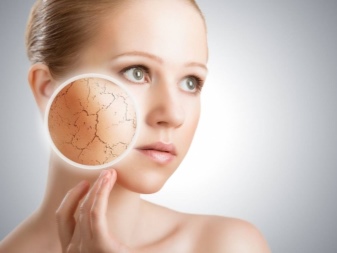
Tar soap does an excellent job with acne due to its antibacterial and drying effect, but it is not able to make the surface of the skin smooth and give it a natural shine. Regular use of soap can dry out the skin, making it lifeless and dehydrated, dull and stressed.
Therefore, the use of such an aggressive composition is possible only with a set of moisturizing products, including a tonic and a moisturizer, which allow you to restore the natural lipid-alkaline balance of the epidermis and properly nourish it with moisture and a complex of useful trace elements.


How to use
For washing
Use the composition with tar instead of the usual foam for washing. For oily and combination skin, you can use the product 1-2 times a day, for dehydrated and dry skin - 3-4 times a week.
- To avoid an unpleasant smell and get rid of a specific plume, wash your face with soap 1-1.5 hours before going outside and before going to bed;
- In order to avoid dryness, monitor the condition of your skin. As soon as you feel the formation of peeling in any of the areas, stop using tar soap for at least 2 weeks;
- Cosmetologists recommend using tar soap acne treatment with a course of 2-4 weeks of daily washing and giving the skin about the same amount of rest in between.
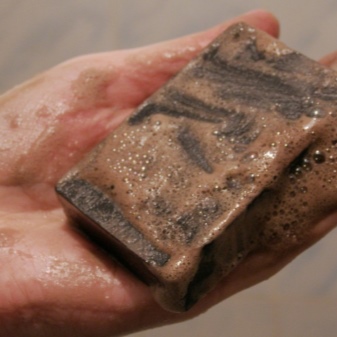
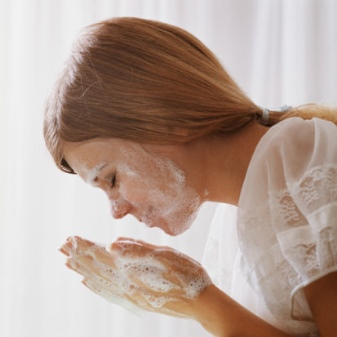
Regular use of the tar composition on the face allows you to dry out the resulting inflammation and prevent the appearance of new ones by cleansing the skin and normalizing its lipid balance. It is important to correctly determine the type of skin: for oily type, the use of the component is indicated up to 2 times a day (morning and evening), for combined - 1, for dry skin with inflammation, it is necessary to limit the use of the composition up to 3-4 times a week or use the spot application method, which we will discuss in the next paragraph.

In the fight against acne on the back, use tar soap as a shower remedy. For best results, leave the composition on the skin for a few minutes and rinse with cool water.
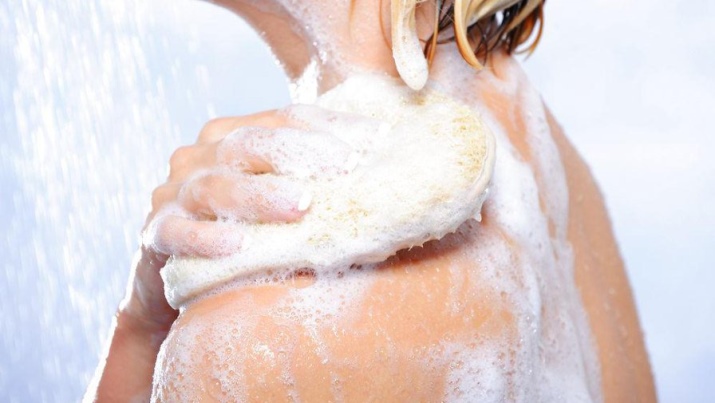
Spot application
This method is suitable for girls with a dry skin type (as well as dehydrated, sensitive), and its essence lies in the point application of the soap composition on inflamed skin or acne.
- Grate the soap or cut off a small piece of bar soap with a knife. If using a liquid product, one drop will suffice.
- Mix the solid base with water and rub between the palms, apply the resulting foam on inflammation pointwise and leave for 2-5 minutes on the skin;
- wash away composition of ordinary water.
The use of this method of washing is convenient for girls with sensitive and even normal skin, when it is important to get rid of local inflammation without touching healthy skin.
Recommendations for using tar soap remain the same - you can use it at night up to 1.5 hours before bedtime or for the same period of time in the morning so as not to acquire a specific plume.


masks
Homemade masks with tar soap are another way to deal with acne.
A face mask based on tar soap is mainly applied pointwise - on inflammation. Such a composition has a pronounced drying effect, and therefore has such a narrow area for application.
The recipe for this mask is extremely simple; mix a little tar soap (dry or liquid consistency) with table or sea salt, apply pointwise to inflammation and leave on the skin for 5-10 minutes. It is important that the mask is used on previously cleansed facial skin.
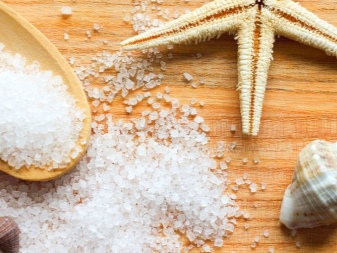

For dry skin, the following recipe is suitable: mix equal proportions of tar and fatty sour cream, use on inflamed areas of the dermis.
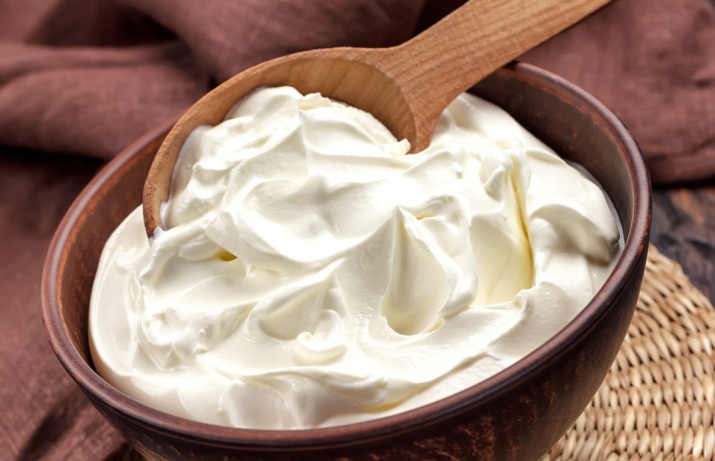
Another nourishing skin mask with honey is extremely simple: mix liquid honey and tar soap in 1: 1 ratios and apply to the area of inflammation or to the entire face.

Beauticians recommend using the tar mask correctly and applying only a freshly prepared mixture to a previously cleansed face. It is recommended to use a mask with salt pointwise for inflammation, and more nutritious formulations can be applied to the entire face, avoiding the delicate skin around the eyes and lips. It is imperative to monitor the reaction of the skin to the composition - at the slightest redness or itching, immediately remove the mask from the face.
Usually the mask works on the skin for 10-15 minutes, it is not recommended to keep it longer. After removing the composition with warm water or herbal decoction, be sure to use a moisturizing or nourishing cream.
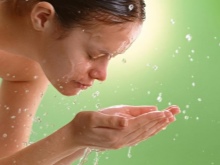
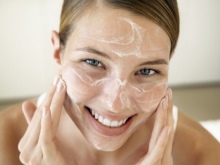

It is recommended to use tar soap for acne in a course of 2 to 4 weeks of regular use, after which you need to take a break. Tar in the composition of toilet soap is a rather active component that can dry out the skin, make it less hydrated. In addition, any epidermis has the ability to get used to daily care, and to make it useful, it is worth giving the skin a break and rest for recovery.
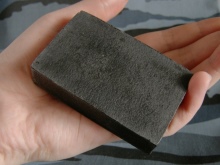
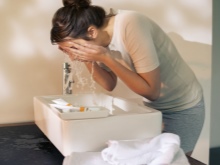

See the next video for the recipe for making a face mask with tar soap.
Reviews
Tar soap perfectly fights acne and other inflammations on the face, it was not for nothing that our grandmothers used it. Reviews of tar in the composition of cosmetic soap are united by one thing - the presence of a specific aroma, sharp and very persistent. Women note that at first they could not stand this terrible smell, but over time they got used to it and subsequently practically do not notice it. The only thing users of tar soap warn about is the use of the product well in advance of leaving the house.


Tar soap dries the skin well and fights rashes caused by clogged pores and an abundance of sebum, so this cosmetic product is especially fond of women with oily epidermis.
Another plus of the tar composition is the low cost that consumers are willing to pay on the way to a healthy dermis without inflammation.
